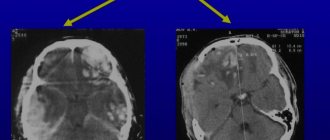What kind of disease is this
Cyclothymia is a mild form of manic-depressive psychosis. Its symptoms are less pronounced and it progresses more easily.
Elation constantly alternates with periods of depression. At the same time, the patient also experiences other cyclic changes associated with appetite, sociability, activity and a sense of self-confidence.
Mood swings occur regardless of any factors. Sometimes they are observed in stressful situations. The disease occurs more often in women in autumn and spring. If left untreated, this mental disorder can become chronic and lead to psychosis.
Patients with cyclothymia should not be entrusted with work related to repairing and driving a car, or raising children. Having this disease can be an obstacle to obtaining a driver's license. If you really want to drive, you need to remove or revise the diagnosis.
How to help someone with cyclothymia?
The first thing is to show it to a doctor. If this is not possible during periods of uplifting mood, then you need to wait until the end of the activity phase and in a conversation convince you to see a specialist. As a rule, during periods of depression, patients agree to consultation. If persuasion fails, an at-home inspection is possible.
Cyclothymia is a chronic disease requiring treatment. The goal is to create remission (satisfactory condition with periodic consultations with a doctor). The following methods are used in the treatment of cyclothymia:
- Pharmacotherapy
- Psychotherapy
- Physiotherapeutic treatment
- Light therapy
- Diet therapy, massage, exercise therapy, etc.
Most often, treatment is carried out at home (outpatient), but in some cases (long-term course, resistance to therapy, serious concomitant diseases) hospitalization may be required.
Specialists provide assistance in diagnosing and treating cyclothymia. If you need our help or advice, please contact us.
Symptoms
Signs of cyclothymia depend on the phase of the disease. There are only two of them:
- Manic. Manifested by euphoria, psychomotor agitation, hyperactivity. A person is ready to perform feats, he is very mobile.
His speech is fast and sometimes incoherent. He cannot concentrate, he grabs onto several things at once. The patient does not feel tired and does not understand that he has mental problems. If they try to calm him down, he expresses aggression. - Depressed. This phase comes suddenly, the patient suddenly becomes sad, withdrawn and taciturn, although only recently he strived to do great things. He has problems with sleep, apathy, fatigue, headaches, and negative thoughts.
An incomprehensible tension inside causes constant fears and anxiety. A person begins to think about his meaningless existence and even suicide. The depressive phase requires urgent help from a specialist, otherwise the consequences can be dire.
The patient often violates labor discipline, commits embezzlement, is able to enter into an illegal transaction and even commit a crime.
Persons suffering from cyclothymia who have committed offenses are considered sane if at that time they were not in a state of psychotic attack. In case of too frequent manifestations of the disorder, the patient may be declared insane (p. 21 of the Criminal Code of the Russian Federation).
Symptoms and signs of cyclothymia
The disease manifests itself very quickly and does not involve any side symptoms. The first episode develops rapidly within 2-3 hours, and some other psychogenic factors may occur in a latent form. When a depressive period sets in, the following signs and symptoms appear:
- Reduced activity, as well as inhibition of the musculoskeletal system
- The appearance of apathy, manifested in a decrease in the number of social contacts
- Decreased motivational scope of activity, the appearance of a depressive state, as well as impaired concentration
- The functioning of libido is disrupted, normal sleep and appetite are lost
- Inability to fully think logically.
As a rule, with Cyclothymia it is rare that suicidal tendencies appear, but reduced self-esteem and the appearance of complexes are diagnosed.
Causes
The main reason for the development of cyclothymia is a hereditary factor. Among the patient's relatives there are always people with depressive disorders.
The provoking factor for the development of the disease is improper upbringing of the child , namely:
- humiliation of him;
- lack of a general scheme for personality formation;
- constant criticism.
Cyclothymia is often observed in adolescents with sudden mood swings and strong feelings about unrequited love. The child may be in an angry state, commit rash acts, and communicate rudely. It happens that a son left home, disappeared for a long time and made his parents worry. This disorder is associated with hormonal imbalance and requires careful monitoring of the teenager. The indifferent attitude of others can lead to dire consequences.
Cyclothymia occurs in people who suffer from instability of the emotional sphere due to hyperactivity of hydrocortisone (a glucocorticoid hormone of a steroid nature), as well as in those who have drug or alcohol addiction.
Cyclothymia
Share with friends
Cyclothymia has always been considered a mild type of bipolar affective disorder with alternating mild or subclinical hypomania and relatively mild depression or subdepression. E. Kraepelin defined cyclothymia as “cyclothymic temperament.” The well-known modern researcher HS Akiskal (1990, 2002) considers cyclothymia as a category of affective spectrum disorders, especially highlighting hyperthymic temperament and its connection with hypomania. Particular attention to cyclothymia was attracted by the works of E. Kretschmer (1921), who tried to build his model from the standpoint of the unity of the somatic and mental. He contrasted the cyclothymic temperament in people with a predominantly pyknic physique, who had a tendency to develop cyclothymia up to psychotic forms of manic-depressive illness, with the schizothymic temperament of people with a predominantly asthenic and asthenic-dysplastic physique. This scheme is rather of historical interest, and is not always confirmed in practice, although some empirical data from E. Kretschmer are relevant to the problems under consideration, including affective disorders. Indeed, somatic, in particular metabolic, changes (fluctuations) are a particular manifestation of cyclothymic affective disorders. Yu. V. Kannabikh (1914) justified the inclusion within the framework of cyclothymia of affective disorders with pseudoneurotic manifestations of the type of somatized depression in the modern sense. The work of the famous internist D. D. Pletnev (1927) on somatic cyclothymia (“cyclosomia”) with a description of the phase-like course of somatic disorders remains important. Ideas by D.D. Pletnev were supported by V.M. Bekhterev (1928), P.B. Gannushkin (1933). In ICD-10, cyclothymia and dysthymia are unduly combined under the rubric of “chronic affective disorders” (F 34). In DSM-IV, cyclothymia is rightfully separated from dysthymia and classified as bipolar disorder. With a certain degree of convention, mild depression that develops at the stages of recurrent depressive disorder, in particular as a result of successful prevention through the systematic use of thymostabilizers, can be classified as cyclothymic depression (subdepression).
The hereditary-genetic nature of cyclothymia is decisive, although the pathogenesis and pathokinesis of the disease may involve environmental influences and provoking factors.
The prevalence of cyclothymia, depending on the criteria, is 3-6% of the general population. Moderate fluctuations in well-being and activity are rarely recognized as painful and therefore are not recorded not only by official statistics, but also by epidemiological studies. The onset usually occurs in adolescence (differentiation from attention deficit hyperactivity disorder is important) or early adolescence.
It represents quite harmonious, sometimes barely noticeable combinations of “ups” and “downs” in all areas of mental and physical activity. Moderately elevated mood corresponds to increased performance, revitalized interests, general intensity and, usually, increased productivity, with a feeling of complete health. This does not exclude some behavioral deviations and disharmonies in the structure of the condition during its formation as a clinical disorder. Subdepressions and mild depressions usually also have a harmonious structure. Mild declines in mood and activity most often follow diurnal fluctuations, although not as distinct as with severe depression. Somatization of depressive affect in the form of dysfunctions of various organs and systems, with a feeling of vague malaise, is a common component of cyclothymic depression. A decrease in motivation for habitual activities and a limitation of interests are often interpreted by patients as their “natural laziness”, without receiving further ideological development. Formalized ideas of guilt are extremely rare. Normal mental and physical productivity is not necessarily reduced, but requires volitional effort.
Cyclothymia can be either wave-like with more or less uniform changes (increase and decrease) in the severity of predominantly subclinical bipolar phase fluctuations, or double (subdepression and mild hypomania), or, more often, separated by intervals. Often, ups and downs in general activity, well-being, and mood are associated with the seasons: seasonal depressions are specifically distinguished - winter-spring and autumn. With accessibility to observation and/or sufficient reflection, subclinical winter and summer seasonal highs and erased hypomania are not so rare and are subjectively experienced as natural well-being with a feeling of complete health. Subdepressions, with their recurrence, are also not always assessed as painful conditions and can be recognized as seasonal fluctuations inherent in a given individual, such as “spring weakness, exhaustion” or “autumn blues.” The need to seek medical help arises only when the next “recession” is severe, aggravated by incoming unfavorable influences, somatization of depression itself, or coincidence with an exacerbation (detection) of some somatic pathology.
Share with friends
Test
There is a special test for cyclothymia online, which allows you to identify a person’s predisposition to a mental disorder. You can complete this study yourself by contacting a psychologist or finding one on the Internet.
The test helps determine the degree and phase of the disease and prescribe adequate treatment.
You must answer “yes” or “no” to questions related to specific behaviors. After self-checking, you can find an interpretation of the results and identify mental problems.
What is cyclothymia in psychiatry?
Cyclothymia: what is it? In psychiatric practice, cyclothymia is a mental affective disorder that is characterized by cyclical changes in a person’s state of mind. This disease is a milder form of bipolar disorder.
Why was cyclothymia made a separate diagnosis?
It's simple: bipolar disorder is defined by sudden mood swings from extremely excited to passive and rare returns to normal, while cyclothymia is defined by periods. These periods can last several days.









